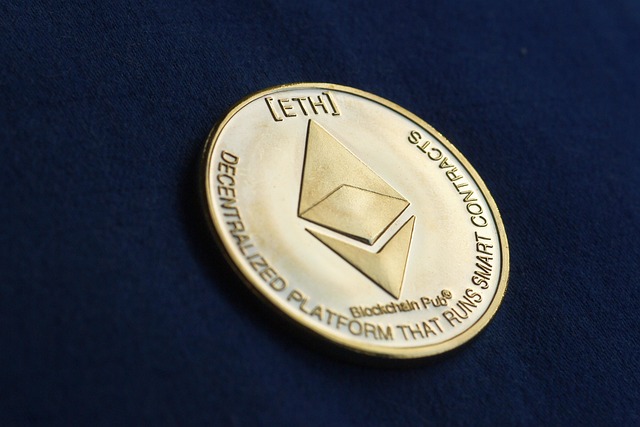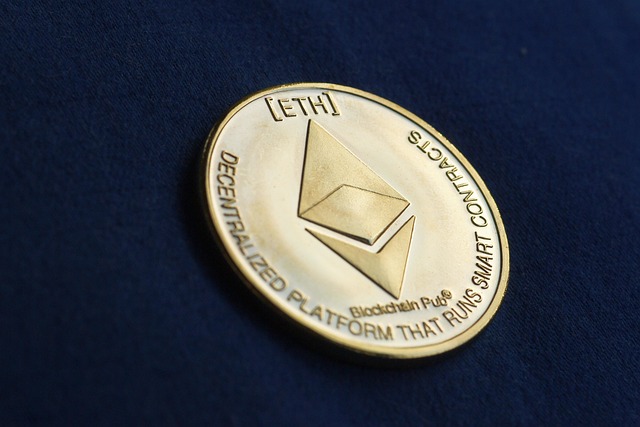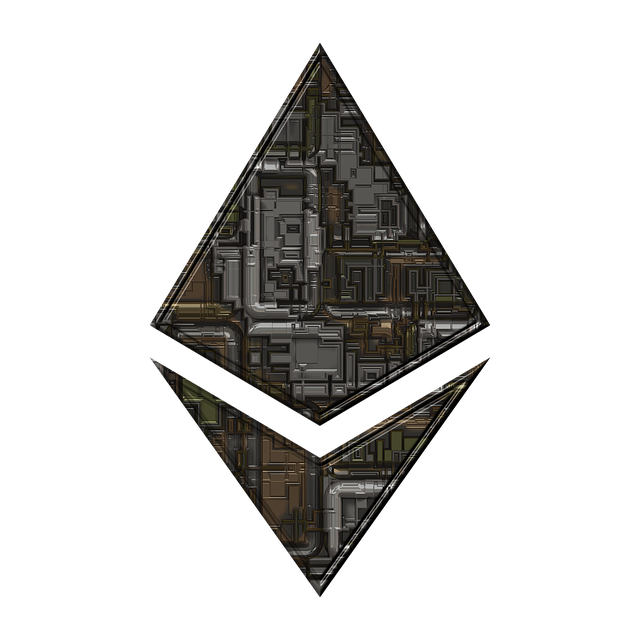Understanding Ethereum Average Block Time and Its Impact
Author: Jameson Richman Expert
Published On: 2025-10-22
Prepared by Jameson Richman and our team of experts with over a decade of experience in cryptocurrency and digital asset analysis. Learn more about us.
Ethereum average block time is a fundamental metric that influences transaction confirmation speed, network throughput, and user experience on the Ethereum blockchain. This article explains what average block time means for Ethereum, how it's measured, what affects it (including post-Merge changes), practical implications for traders and developers, comparisons with Bitcoin, and actionable methods to calculate and monitor block times. You’ll also find resources, exchange options, and links to deeper reads to help you act on this information.

What Is Block Time?
Block time is the average interval between the creation of successive blocks on a blockchain. It determines how frequently the network confirms transactions and appends data to the ledger. For users, a shorter block time generally means faster confirmations; for network designers, it impacts finality, security, and propagation requirements.
Why Block Time Matters
- Transaction speed: Faster block times lead to quicker confirmations.
- Throughput: Blocks per second combine with block size and gas limits to define network capacity.
- Finality and security: Very short block times can increase the chance of forks and uncle/orphaned blocks. Longer times reduce this risk.
- User experience: Wallets, DApps, and exchanges often depend on a predictable block cadence for confirmations and state updates.
Ethereum Average Block Time — Historical and Current Context
Historically, Ethereum (pre-Merge proof-of-work) averaged around 12–15 seconds per block. After the Merge (September 2022), which moved Ethereum from proof-of-work (PoW) to proof-of-stake (PoS), the block time remained in the same ballpark — typically around 12 seconds — because the protocol parameters were tuned for a similar cadence under PoS. Many monitoring sites, including Etherscan, report a typical average block time near 12 seconds, although moment-to-moment values fluctuate with network conditions.
To explore how block time relates to other trading and network considerations, you can read practical market strategies like this Daily Crypto Trading Guide for 2025, which includes timing and execution considerations that relate indirectly to block confirmation speeds: Daily Crypto Trading Guide 2025 — Strategies & Insights.
How Merge and Protocol Upgrades Affect Block Time
The Merge changed Ethereum’s consensus but preserved block cadence targets. Under PoS, validators propose blocks at regular slots, and block times are influenced by slot duration and proposer behavior. While PoS adds determinism to block proposal, network latency and propagation still cause variability. Future upgrades (e.g., proposer-builder separation, slot modifications, or more aggressive gas/token-economy changes) could influence average block time indirectly by changing block sizes, propagation, or validator behavior.
How to Measure Ethereum Average Block Time
Measuring average block time accurately is key for analytics, wallet UX design, and SLA commitments by custodians or exchanges. Here are practical methods and examples.
Simple Calculation
- Record block timestamps for two block heights: height A and height B (B > A).
- Compute time difference: delta_time = timestamp(B) – timestamp(A).
- Compute block difference: delta_blocks = B – A.
- Average block time = delta_time / delta_blocks.
Example: If block 16,000,100 has timestamp 1,700,000,000 and block 16,003,100 has timestamp 1,700,036,000, then delta_time = 36,000 seconds and delta_blocks = 3,000 blocks, so average block time = 36,000 / 3,000 = 12 seconds per block.
For programmatic monitoring, use block explorer APIs such as Etherscan's API or run your own Geth/Nethermind client and query RPC. Etherscan offers block data and metrics (see Etherscan block API and statistics pages) which are useful for real-time monitoring: Etherscan.
Rolling Averages and Window Selection
Using a rolling average smooths short-term spikes. Typical windows:
- Short-term: 5–30 minutes (suitable for UX and immediate confirmations)
- Medium-term: 1–24 hours (suitable for operations and monitoring)
- Long-term: 7–30 days (suitable for historical analysis)
Choose windows depending on your use case. Short windows show variance but may be noisy; longer windows give stability but can hide sudden congestion events.

Factors That Affect Ethereum Average Block Time
Several variables influence Ethereum’s block time. Understanding them helps predict and react to changes.
Network Conditions and Latency
Latency between validators and network peers affects how quickly a block propagates. Higher latency can slightly increase effective block intervals or result in missed proposals, raising average times.
Validator Performance and Availability
Under PoS, validators must be online and responsive. Slashing penalties, downtime, or poor connectivity from a subset of validators can reduce the number of timely proposals, impacting average block time.
Protocol Parameters (Slot Duration)
Ethereum uses a concept of slots and epochs in PoS. Slot duration defines potential block proposal cadence. While protocol designers set target durations, the effective block time can vary if proposers skip slots or if network conditions create propagation delays.
Network Upgrades and Gas Usage
Heavy gas usage affecting block fullness doesn’t change the protocol’s slot cadence directly, but propagation of larger blocks (more transactions) can increase propagation time, indirectly increasing the chance of skipped slots or uncle blocks.
Attacks and Congestion Events
Coordinated congestion or denial-of-service (DoS) events can temporarily increase average block time by increasing block propagation latency or pushing validators to skip proposals.
Practical Implications for Users and Developers
Let’s translate average block time into concrete behaviors for different roles.
For Traders and Exchanges
- Order Execution and Settlement: Faster block times generally mean quicker on-chain settlement, but confirmations required by exchanges (e.g., 12 confirmations) translate into real wait times. For example, at 12 seconds per block, 12 confirmations ≈ 144 seconds (2.4 minutes).
- Fee Estimation: Block time affects how quickly a transaction can be included at a given gas price. During congestion, effective waiting times increase. For background on fee dynamics comparing block cadence impacts in other chains, you may find this Bitcoin fee analysis useful: How are Bitcoin transaction fees calculated? — In-depth analysis.
- Risk Management: Exchanges often set confirmation thresholds based on block time; faster block times can reduce counterparty and settlement risk.
For Developers and DApp Builders
- UX Considerations: Present expected confirmation times derived from recent average block times to users instead of fixed values.
- Event Processing: If your service waits for N confirmations, calculate the expected time and design timeouts accordingly.
- Oracles and Finality: Some layers (e.g., L2s, cross-chain bridges) require stronger finality guarantees; understanding average block time helps set reorg/confirmation policies.
For Validators and Node Operators
Monitoring average block time helps detect proposer skipping, network health issues, or client problems. Implement alerts for deviations beyond expected ranges and maintain robust peer connectivity.
Confirmation Counts: How Many Blocks Should You Wait?
Common confirmation policies:
- Low-risk transfers: 6–12 confirmations
- High-value transfers: 30–100 confirmations or finality-based methods (e.g., waiting for confirmed epoch finality)
- Smart-contract state changes: May require additional application-level checks and business logic to ensure correctness
Example: With an ethereum average block time of 12 seconds:
- 1 confirmation ≈ 12 seconds
- 12 confirmations ≈ 144 seconds (~2.4 minutes)
- 50 confirmations ≈ 600 seconds (~10 minutes)
Note: Under PoS, “finality” occurs at epoch boundaries; many services use finality proofs or canonicalization to reduce reliance on raw confirmation counts.

Comparing Ethereum Average Block Time with Bitcoin
Bitcoin targets a 10-minute block time, which means confirmations are coarser but blocks are larger in terms of time-based settlement windows. Ethereum’s faster block time (around 12 seconds) means quicker on-chain UX but requires careful attention to block propagation and fork risk.
If you want to dig deeper into how fees and timing interact on Bitcoin (useful context for cross-chain decisions), review the in-depth fee analysis here: Bitcoin fee calculation — analysis.
How Layer 2s and Rollups Use Block Time
Layer 2 (L2) solutions — optimistic rollups, zk-rollups — rely on mainnet block times for different operations:
- Batch submission cadence: Many rollups post batched transactions to Ethereum periodically; block time influences how quickly batches can be confirmed.
- Challenge windows and withdrawals: Optimistic rollups use challenge periods measured in blocks/epochs, so average block time affects the wall-clock length of those windows.
- Cost and reliability: L2 designs optimize for predictable base-layer cadence; a stable ethereum average block time allows better user expectations.
Monitoring and Tools
Primary monitoring tools and resources:
- Etherscan — block explorer with average block time statistics, blocks per day, and API access.
- Ethereum.org — official protocol documentation, upgrades, and developer resources.
- Ethereum — Wikipedia — background, history, and technical overview.
- Run your own Ethereum node (Geth, Nethermind) to pull timestamps directly from the chain for the most reliable measurements.
Setting Alerts
Set alert thresholds such as:
- Average block time > 1.5× normal for 10+ minutes
- Number of skipped slots or uncle blocks spikes
- Validator downtime or missed proposals
Acting on alerts may involve improving node connectivity, investigating client errors, or contacting validator operators.

Actionable Steps to Calculate and Use Average Block Time
- Choose your data source: Etherscan API, Infura/Alchemy RPC, or a full node.
- Define a window for the rolling average (recommend 1 hour for UX, 24 hours for operations).
- Implement automated scripts to pull block heights and timestamps and compute averages regularly.
- Integrate average block time into wallet UIs and API responses so end users see realistic confirmation estimates.
- Set operational alerts for deviations and ensure fallback procedures (e.g., increase required confirmations) are in place.
Sample CLI pseudocode (conceptual):
FetchBlockTimeAvg(startBlock, endBlock):
- For each block in range, get block.timestamp
- avg = (timestamp[end] - timestamp[start]) / (end - start)
- Return avg
Practical Examples and Calculations
Example 1 — A payment gateway wants to display estimated settlement time for deposits with 12 confirmations. If the current ethereum average block time is 12 seconds, the gateway displays: “Estimated settlement: ~2.5 minutes.” Implement dynamic updates so if average block time increases to 18 seconds during congestion, the displayed estimate changes to ~3.6 minutes.
Example 2 — A DEX uses an arbitrage bot that requires final settlement confidence. It waits for epoch finality rather than count-based confirmations; with an average block time of 12 seconds and epochs of 32 slots (for example) the DEX calculates expected time to finality accordingly and avoids premature settlement actions.
Risks and Caveats
When using ethereum average block time to plan operations, remember:
- Short-term spikes and unusual events (network congestion, validator issues) can temporarily distort averages.
- RPC timestamp reliance: Node clocks must be accurate; if node time is skewed it can bias calculations.
- Different data providers might report slightly different averages based on sampling and window sizes; always document your method.

Using this Knowledge for Trading and Account Management
Understanding block time helps with trade execution, deposit/withdrawal planning, and setting realistic user expectations. For broader trading strategies beyond block-time considerations, you can consult comprehensive trading guides that address timing, liquidity, and risk management: Daily Crypto Trading Guide 2025.
Also, if you work across different markets (like forex demos or practice accounts) and need housekeeping tips for trading environments, this step-by-step guide may be helpful: How to delete a forex demo account — step-by-step.
Where to Trade and Monitor Ethereum
If you want to trade or monitor ETH with reputable platforms, consider registering with major exchanges and using their on-chain tools and UX. (These are referral links; use them based on your preferences and jurisdictional rules.)
- Register on Binance — large liquidity, on-chain explorers, and staking options.
- Register on MEXC — spot and derivatives trading with varied products.
- Register on Bitget — copy trading and derivatives features.
- Register on Bybit — derivatives and staking services.
Advanced Considerations
Statistical Confidence and Variance
When using average block time in SLAs or financial contracts, calculate confidence intervals and variance. Use standard deviation of block intervals over your chosen window to set conservative estimates.
Economics: Block Time vs. Fees
Block time interacts with fee markets: shorter average block times can make fee estimation finer-grained, but if blocks are full, users still face high fees. Upgrades like EIP-1559 affect fee dynamics by introducing base fee adjustments per block — the base fee changes with demand per block, so observing recent blocks and base fee trends is essential for accurate gas price estimation. For a deep dive into how block times and fees interplay on other chains like Bitcoin, review this analysis: Bitcoin transaction fees — in-depth.
Policy and Compliance
Large custodians and exchanges often set internal policies based on block times to protect users. Ensure your business aligns with such policies and communicate expected confirmation times to end users transparently.

Conclusion — Putting Average Block Time to Work
Ethereum average block time is central to how quickly transactions are confirmed, how services estimate settlement windows, and how developers design UX and security policies. By measuring it accurately, integrating rolling averages into your apps, and preparing for variance during congestion or upgrades, you can use block time insights to improve performance and user trust. For trading and operational contexts, combine block-time insights with fee analysis and robust confirmation policies to reduce settlement risk.
For further reading, consult Ethereum’s official resources (ethereum.org), block explorers like Etherscan, and practical trading or technical guides for deeper context: Daily Crypto Trading Guide 2025, Bitcoin fee analysis, and even broader trading hygiene like how to manage demo accounts.
Recommended Next Steps
- Implement monitoring: start sampling block timestamps every minute and compute rolling averages.
- Update UX: show dynamic confirmation time estimates in wallets and exchanges based on recent averages.
- Set operational alerts: notify when average block time deviates significantly.
- Keep learning: follow Ethereum improvement proposals (EIPs) and client releases that can affect block propagation and slot behavior.
If you’d like, I can provide sample scripts (Node.js/Python) to pull block timestamps from Infura/Alchemy or Etherscan and compute rolling average block times tailored to your desired window and alerting thresholds.